Q: Pond, bog, swamp, marsh, fen---what are the differences?
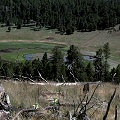
Northern Arizona
acid pond
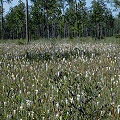
Alabama savannah
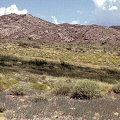
A Nevada seep
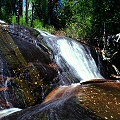
South Carolina
cataract bog
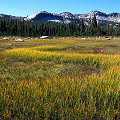
California
slow stream
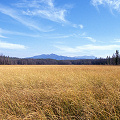
Montana
circumneutral fen
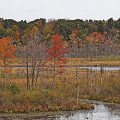
Massachusetts
calcareous fen
A: People commonly describe wetlands with words like
pond, bog, marsh, fen, and swamp,
thinking these are mostly interchangeable.
Actually, there are careful definitions for each of these names. The only problem
is that a hydrologist may use one set of definitions, while a botanist may use
another, and an ecologist may use yet another. Below are some definitions for
wetlands, not all of which house carnivorous plants.
Aapamire: A midwest USA peatland found
on a slight slope, and this inclined situation
results in an fascinating ribbed topography.
Bay, Carolina: In North
and South Carolina you may find these interesting elliptical, rimmed wetlands. For more about these, look at
this FAQ entry.
Bay, Delmarva: A Carolina Bay that occurs in
Maryland.
Billabong: Australian term for oxbow lake.
Billabongs I have seen were muddy, and while they were lovely crocodile
habitats, were unsuitable for carnivorous plants (thank god).
Bog, cataract: In the Appalachian mountains in the US, large domelike rock outcrops often force groundwater to the
surface. Water sheets over the rock surface, and a Sphagnum apron often develops. This is a good
habitat for rare mountain Sarracenia.
Bog, kettlehole: In the midwestern US, glacial action produced holes
which in recent times have filled with water to become small bogs
Bog, marl: Extremely calcareous fens.
Bog, peat: Characterized by vegetation which is not decaying
rapidly, so the undecayed material accumulates as peat. Sphagnum moss is a common
inhabitant of bogs. Contrary to popular belief, bogs are not
necessarily smelly places---none of the carnivorous plant bogs I have visited are dens of putrefaction.
Certainly, an occasionally mucky spot will release a choice cloud of gas when trod upon, but
on the whole bogs are very fresh and clean.
Bog, raised: A bog in which the Sphagnum has grown so
much that the bog surface is raised a few meters above the surrounding habitat. Such sites are
extremely low in nutrients. In the USA, I think these are restricted to areas in coastal Maine.
Cienega: In the southwestern US, wet soggy
places are often called cienegas, derived from cien aguas, or
one hundred waters.
Fens: Similar to bogs, but where the nutrient levels are higher because they are
fed and drained with streamwater. Sphagnum may be present, but is
absent in rich fens.
Inselbergs: Large precambrian rock outcrops, often (exclusively?) granite or gneiss, that water flows over as surface water.
These are often very seasonal in terms of moisture. African inselbergs are rich in Genlisea biodiversity.
Lake: An open body of water. Bigger than a pond.
Marsh: These are wetlands are populated with emergents---plants like
cattails or a saw grass, which
grow in the mud underwater but which stick out above the
water level. Many marshes are brackish or saltwater wetlands
(carnivorous plants only grow in freshwater).
Moors: European peatlands
usually dominated by Ericaceous
shrubs (plants related to blueberries). See "muskeg."
Muskeg: Add spruce to a moor, move it to Canada, and it would
be called a muskeg.
Pond: An open body of water. See Lake.
Prairie: A regional term in Okefenokee swamp, that describes floating Sphagnum
or sedge mats.
River: Lots of water flowing downhill. Smaller versions are called
streams or creeks. Often navigable by boats.
Savannah: Regional term from the southeast USA, describes a grassy, seasonally wet meadow.
Seep: Commonly used to describe a place where water is oozing
through the ground, often down a slope.
Swale: A wet low point, often in dune habitats.
Swamp: Flooded forests. In the USA, typical trees in swamps are cypress and
tupelo. Floodplain forests (only seasonally flooded) are not swamps. Nor are forests
that have been inundated by beaver action---the trees in this case are probably doomed because
they are not adapted to such high water tables.
Vernal pools: Low depressions in the
ground that hold water for a few months in the spring.
This list of terms continues, including specialized places like carrs, pocosin,
hollows, mires, palsas, and others.
Page citations: Crum, H., & Planisek, S. 1992; Fischer, E. et al. 2000;
Johnson, C.W. 1985;
Juniper, B.E., et al. 1989; Rice, B.A. 2006a; Schnell, D.E. 2002a; personal observation.